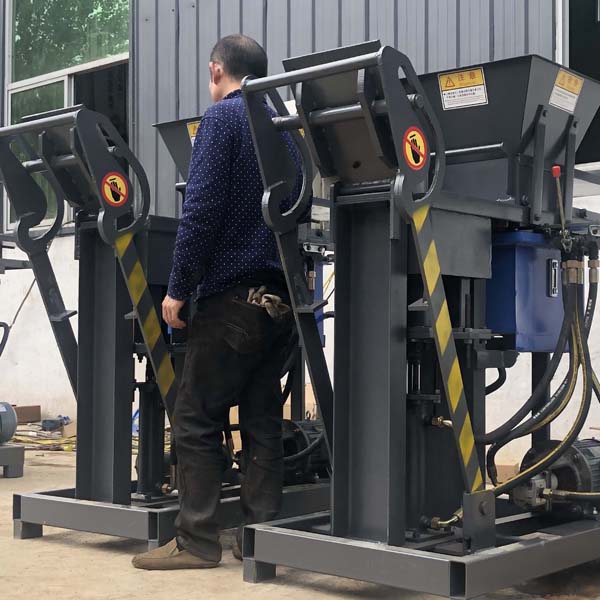
Image source: Aiwei block machine
Introduction:
The Chinese brick making machine industry has been witnessing a significant transformation in recent years with the rapid integration of automation technologies. Automation has brought numerous benefits to the industry, including increased productivity, improved efficiency, and enhanced product quality. However, the adoption of automation has also raised concerns about its impact on employment. In this article, we will explore the effects of automation on employment in the Chinese brick making machine industry, analyzing both the opportunities and challenges that arise.
The Rise of Automation in the Brick Making Machine Industry:
Automation technologies, such as robotics, artificial intelligence (AI), and advanced control systems, have revolutionized the brick making machine industry in China. These technologies have enabled the development of fully automated and semi-automated brick making machines that can perform tasks traditionally done by human laborers. Automation has led to increased production capacity, reduced operational costs, and improved overall efficiency in brick manufacturing.
Positive Effects of Automation on Employment:
Increased Productivity and Output:
Automation has significantly boosted the productivity and output of brick making machines. Automated machines can work continuously without breaks, leading to higher production rates and increased output. This increased productivity has created new job opportunities in areas such as machine maintenance, programming, and quality control.
Improved Working Conditions:
Automation has eliminated many physically demanding and repetitive tasks previously performed by human workers. This has resulted in improved working conditions, reduced risks of work-related injuries, and enhanced employee safety.
Skill Upgradation:
With the introduction of automation, the demand for skilled workers in the brick making machine industry has increased. Workers now need to possess technical skills to operate, program, and maintain automated machines. This has led to the upskilling of the workforce and the creation of specialized job roles.
Challenges and Concerns:
Displacement of Low-skilled Workers:
The adoption of automation in the brick making machine industry has led to the displacement of low-skilled workers who were previously involved in manual labor tasks. These workers may face challenges in finding alternative employment opportunities or may need to undergo training to acquire new skills.
Job Polarization:
Automation has led to job polarization, with a decline in middle-skilled jobs and an increase in both low-skilled and high-skilled job opportunities. This may result in income inequality and socioeconomic disparities if adequate measures are not taken to bridge the skills gap and provide retraining programs.
Technological Unemployment:
The fear of technological unemployment arises as automation replaces human workers in various tasks. However, it is important to note that automation also creates new job roles and opportunities in areas such as machine maintenance, programming, and system integration. The workforce needs to adapt to these emerging roles through continuous learning and upskilling.
Future Workforce Requirements:
Skill Development and Training:
To address the challenges posed by automation, it is crucial to invest in skill development programs and vocational training that equip workers with the necessary technical skills to work alongside automated machines. This will help in the smooth transition to an automated manufacturing environment.
Emphasis on Creativity and Problem-solving:
While automation takes over repetitive tasks, there is an increasing demand for workers who can contribute to innovation, creativity, and problem-solving. Developing these skills will be crucial for the future workforce to thrive in the brick making machine industry.
Collaborative Workforce:
The integration of automation should be seen as an opportunity for collaboration between humans and machines. Building a collaborative workforce that combines human skills with the capabilities of automated machines will be essential for the industry’s success.
Conclusion:
The integration of automation in the Chinese brick making machine industry has brought both positive impacts and challenges to employment. While automation has increased productivity, improved working conditions, and created new job opportunities, it has also raised concerns about job displacement and the need for upskilling. The industry needs to adopt a holistic approach that combines automation with workforce development strategies, including skill development programs, job retraining, and the promotion of creativity and problem-solving skills. By embracing automation while investing in the workforce, the Chinese brick making machine industry can navigate the challenges and seize the opportunities presented by automation, ensuring a sustainable and prosperous future for both the industry and its employees.
